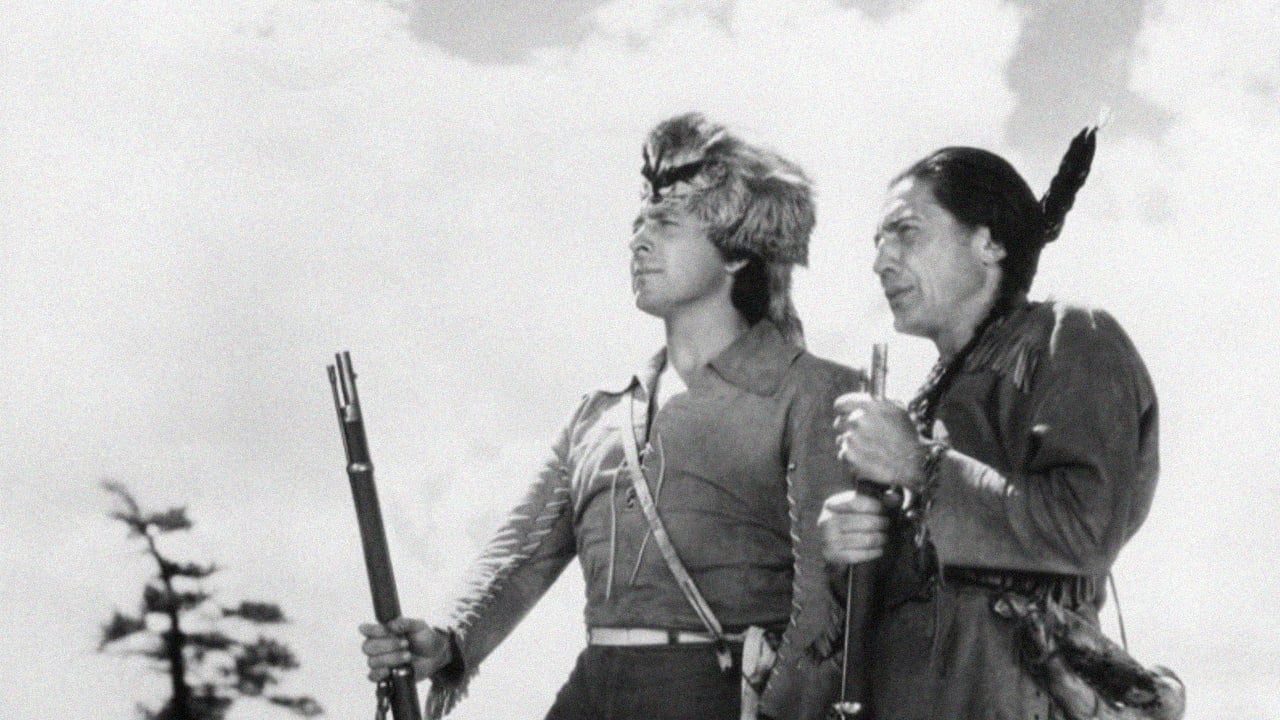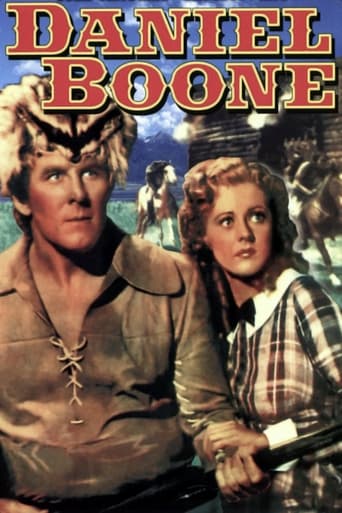

1936's "Daniel Boone" benefits from the casting of George O'Brien in the title role, still a few years away from retirement. An accurate portrait of the rigors of life on the Kentucky frontier, complicated by omnipresent evildoer Simon Girty (John Carradine), leading a band of renegade Indians that indulge in murder and rape. Also conducting villainy from a safe distance is prissy British aristocrat Stephen Marlowe (Ralph Forbes), supported by the Virginia legislature in confiscating the land built up by Boone's people. Love interest is provided by Heather Angel, solid support from George Regas and Clarence Muse. Later appearing as a murderer on the 60s teleseries DANIEL BOONE ("The Witness"), Carradine, on loan from Fox, excels in one of his flashier villain roles; too bad the picture sags a bit when he's off screen too long (he appropriately wears a skunk-skin cap, as opposed to Boone's traditional coonskin).
... View MoreThis 1936 Daniel Boone movie starts badly—with a Plains Indian shooting a flaming arrow—even though Boone never encountered any of these Indians since he lived in the Appalachians—many, many, many miles away. In the 1700s when Boone lived, no contact had yet been made between Americans and these tribes. However, natives in the course of the film appeared to be the correct type and the film turned out to be pretty good.The film stars George O'Brien as Boone. He was pretty famous during the late silent era with the leads in such films as "Sunrise". He also later made a name for himself in westerns. He was pretty good as the believably rugged title character. His job in the film is to lead a group of colonists to new land in the west (probably around what is Tennessee or Kentucky—just before the American Revolution. However, there are a couple different baddies who are out to stop them. The most obvious of these is a guy played by John Carradine—a white man who has rejected his people and stirs up the Indians to attack. It seemed quite appropriate that he wore a skunk-skin cap! The other, less obvious, is a prissy Englishman who is in love with a girl who Boone secretly adores. See the film to see how it all ends, though I will say the end was a bit of a surprise, as good didn't necessarily triumph over all evil in this tale.This film is from RKO---and I am a bit surprised it was allowed to lapse into the public domain. It's rather entertaining and offers a look at the early settlement of the country. But, sadly, the sound is a bit uneven, though the print otherwise looks fine.Usually I make a lot of comments about the historical inaccuracies of the film. However, the spirit of the film is reasonably close to real life—and Boone's mythic status makes it difficult to determine what he REALLY did do!
... View MoreSeeing the film today gave me an interesting perspective on our country's history, as the events took place one year before the Declaration of Independence. With the Revolutionary War in full swing, an entirely different battle was being waged on the near Western frontier of 'Kain-Tu-Kee', the Indian name for a 'dark and bloody ground'. It was here the legend of Daniel Boone was born, and the film states it tries to remain true to the core of the frontiersman's legacy.I was intrigued by a number of the portrayals in the film that had nothing to do with the main characters. Women in particular were shown chopping wood, spading hard ground and fording rivers on horseback carrying babies in the cause of civilization. The film also depicted blacks respectfully, though in typically subservient roles; it was the black character Pompey (Clarence Muse) who offered the suggestion for the name of Boonesborough.There's an interesting scene where Pompey and Black Eagle (George Regas) have a conversation about the similarities of 'black' and 'red' men. Pompey's take on it is that both were baked by the sun, but the Indian was 'underdone'! Boone is ruggedly portrayed by George O'Brien in a characterization that reminded me of George Reeves' Superman, to me he looked like two different people with and without his coonskin cap on. His first encounter with the renegade white Simon Girty (John Carradine) offered a comedic touch with the knife swallowing gimmick. Later on, his shirtless physique takes center stage when captured by hostiles and relegated to a burning stake, most assuredly one of film's early recognitions of the beefcake factor in heroic movies.My prior introduction to Heather Angel involved her role as Miss Phyllis Clavering in the 'Bulldog Drummond' franchise, a series of detective mysteries of the same era. Here she balances her affections between British royal Stephen Marlowe and the adventurer Boone until Marlowe realizes he's second string. Her young brother Jerry is played by Dickie Jones, who in the 1950's became Range Rider's sidekick and later starred as Buffalo Bill Jr. in a couple of early TV Westerns.For an early talkie "Daniel Boone" seems to handle it's subject fairly well with a nice blend of action, adventure and insight into early frontier life. It does seem to leave a question mark for an ending though, as the pioneers are shown heading out once again in search of new territory. One must assume that the governor in Richmond fully intended to deny squatters rights to the settlers, on land annexed to Virginia for the glory of the Crown.
... View MoreThe picture deals as the title says about Daniel Boone ( George O'Brien ) , as famous scout , he leads some settler families towards Kentucky state ; meanwhile he falls in love with a beautiful colonist ( Heather Angel ) facing off her suitor ( Ralph Forbes ) . Besides , he'll confront Indians led by a nasty villain ( John Carradine ) , risks and numerous perils. The film is based on real events , these are the following : In 1775,after mediating the purchase of 20 million acres of Kentucky Cherokee land,which was about to be opened to white settlers as the 14th colony,Transylvania,the 40 years old Boone(1734-1820,dead at the age of 85) led colonials to blaze trail.Driving northward from Tenessee through the Cumberland Gap to the Kentucky River,they cleared the famous Wilderness Road,which ended at a settlement on the Kentucky, they called Boonesborough in honor to his name.Daniel Boone as militia leader charged with directing the defense of Kentucky's frontier settlements against Indian attacks and stalled a raid on defenseless women and children left in Boonesboro.Captured by Shawnees and after escaping,Boone reached the settlement in time to help fight off Indian attack and his legend grew to epic proportions and would gain an inflated reputation as Indian fighter ,learning his wilderness skills from friendly Native Americans whose ways he respected and understood.In fact,the myths about Boone's prowess abounded and multiplied even in his own time,but in true,Boone never relished fighting Native Americans and may have killed only one Indian during his entire career and contrary to myth he never wore a coonskin cap.His greatest legacy is,perhaps,his undying legend as the first trail-brazer of America's advance to the West coastThe motion picture packs adventures , battles , action though is a little bit outdated because of being an early talkie the film-copy is worn-out. The flick will appeal to old movies buffs and frontier western enthusiasts.
... View More